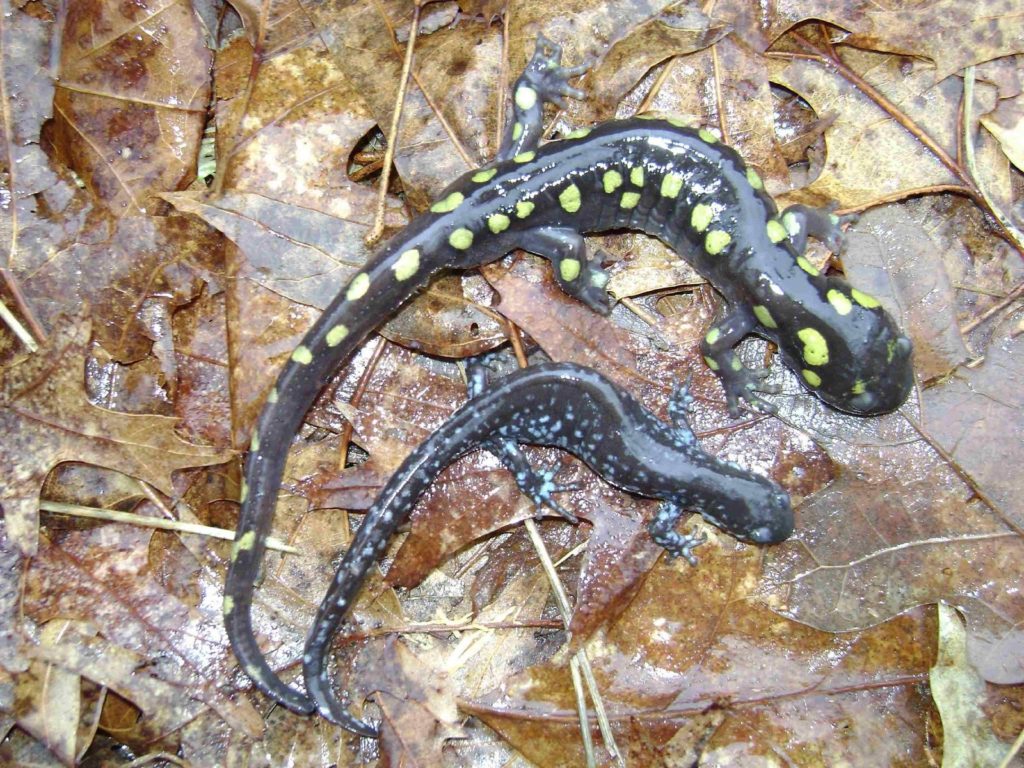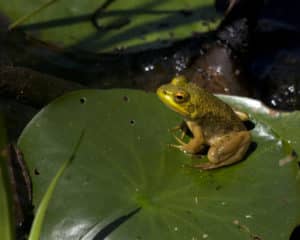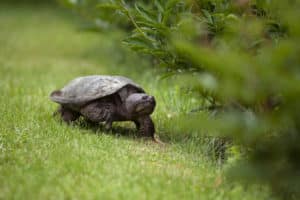
Like creepy-crawly critters? Did you love looking for turtles, snakes, or salamanders as a kid? If so, rekindle that curious kid to help the Maine Department of Inland Fisheries and Wildlife (IFW) search for amphibians and reptiles across Maine this spring, summer, and fall.
This is the last year to collect and submit data on occurrences of these marvelous creatures before the third edition of Maine Amphibians and Reptiles is finalized for publication. The book is based in part on the 13,000 records that have already been submitted to The Maine Amphibian and Reptile Atlas Project (MARAP), which has been ongoing for 36 years, but there are still holes to cover.

Did you know there are nine different frogs and toads in Maine and not one of them sounds like the classic rrrbit so often referenced? The Wood Frog quacks like a duck; the Spring Peeper peeps; the American Toad and Gray Treefrog both trill; the Leopard Frog and Pickerel Frog snore; the Green Frog plucks a banjo; and the Bullfrog sounds like a loud horn.
Just as their calls vary widely, so do their looks and their habits. Some breed in vernal pools but spend the rest of the year under leaves in the forest, some like to climb trees, some prefer hanging out on the banks of a stream, and others prefer staying wet in ponds. Just think of all the cool places you can visit to look for these creatures!
Maine is also home to nine salamanders, including Spotted and Blue-spotted Salamanders (pictured above) that breed in vernal pools but live underground in the forest most of the year; Northern Spring and Dusky Salamanders that both cling to streams; Red-backed Salamanders that prefer hiding underneath decaying logs; and Eastern Newts that live on land as juveniles but return to permanent ponds as adults. Try turning over a log in the woods or gently moving a rock in a stream and see what you can uncover. Be sure to put the salamander, log, or rock back the way you found it before you leave. You’ll have to be quick with your camera though, as most of these guys move fast, especially on a warm day!

If you prefer looking for a slower-moving critter, try searching for Snapping Turtles or Wood Turtles, neither of which have been documented from Northwestern Maine, even though they are probably there. You could be the first! Or try finding a rare Blanding’s or Spotted Turtle in southern Maine, feeding in or moving between vernal pools.

And don’t forget the snakes! You can search for all 10 Maine snakes, or pick one or two favorites. If you like the pitch pine forests and grasslands of southern Maine, perhaps you will be lucky enough to spot a Black Racer. Or if you prefer wearing your rubber boots for a dash through a wetland or pond, you might find a Northern Water Snake or perhaps even the more ubiquitous Brown Snake. If you’d rather just stay in your backyard, you’re likely to see an Eastern Garter Snake or Green Snake. All records are helpful.
You can also learn more about Maine’s amphibians and reptiles on the IFW website here. If you already know your species, great—just submit your findings online to iNaturalist or use the Maine Amphibian and Reptile Atlas online submission form or app. You don’t have to be an expert to search for and share information about your discoveries. Just snap a picture and send it to the experts to verify along with a few notes on where you took the photo.
Any time you spot a salamander, frog, turtle, or snake in Maine, take a photo and submit it with the following information:
• Number of individuals
• Species (don’t worry if you are unsure, MDIFW biologists will review every record)
• Date
• Your contact info
• Location (A street address is fine, or use the map feature right in the submission form to add a GPS location.)
So join the fun, spark your curiosity, explore Maine, and learn something new about your mostly hidden neighbors. Share your explorations with friends and family, and help us complete our search for amphibians and reptiles across Maine. For more information, please read this blogpost from Phillip deMaynadier at IFW, or visit the Maine Amphibian and Reptile Atlas Project webpage.
